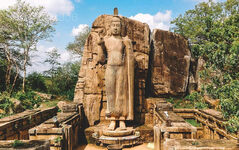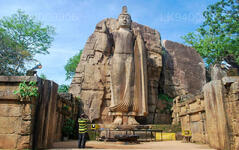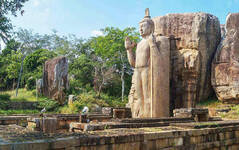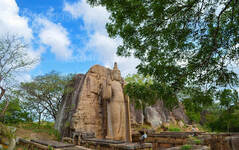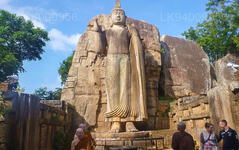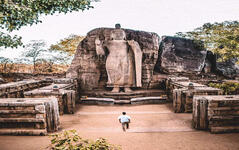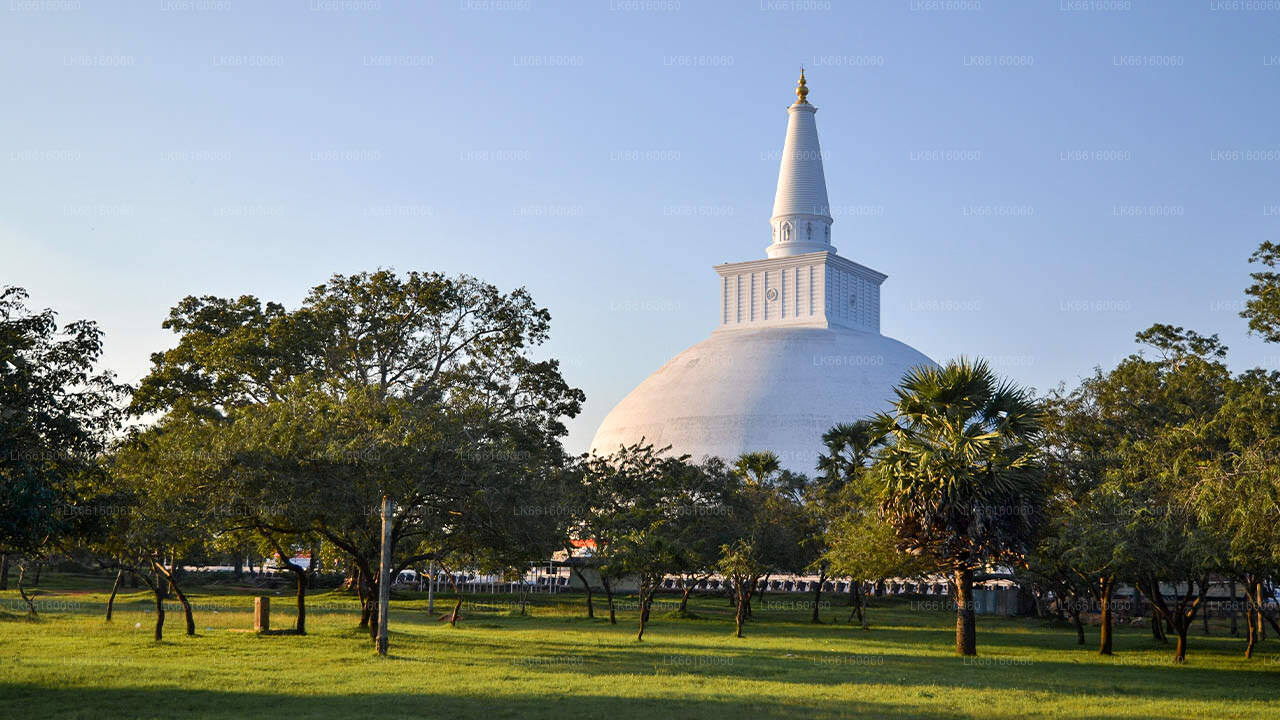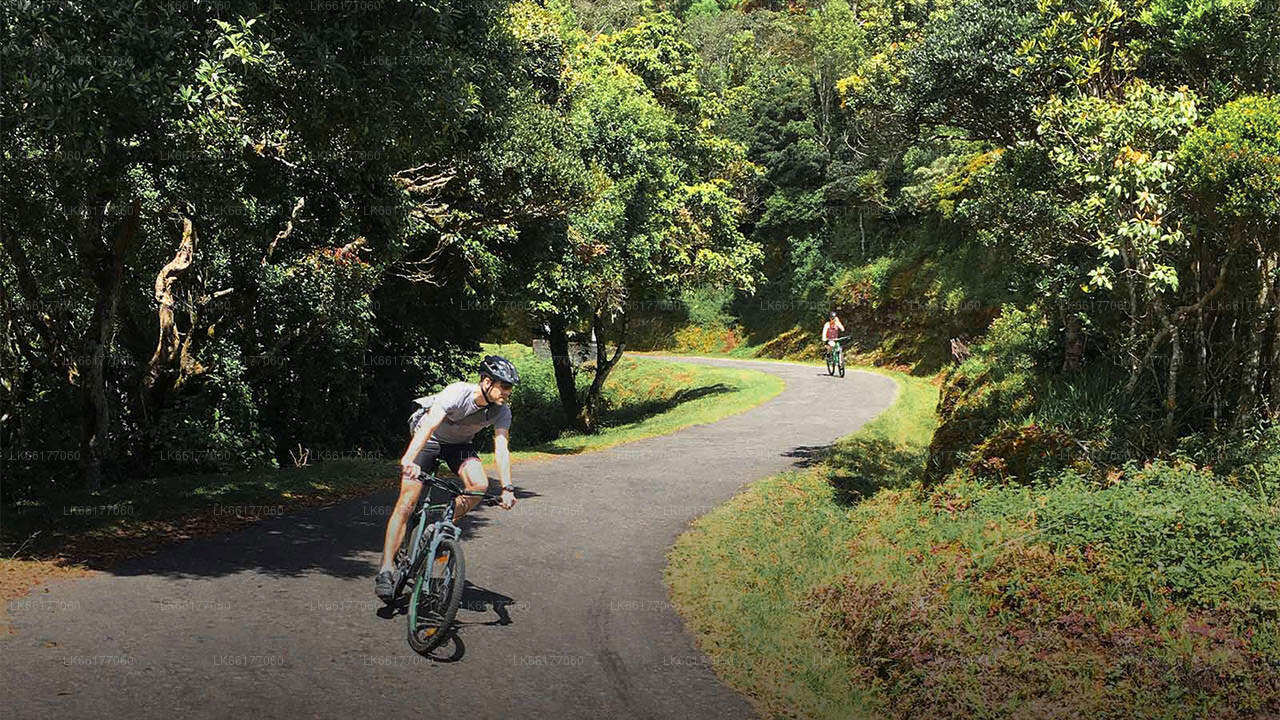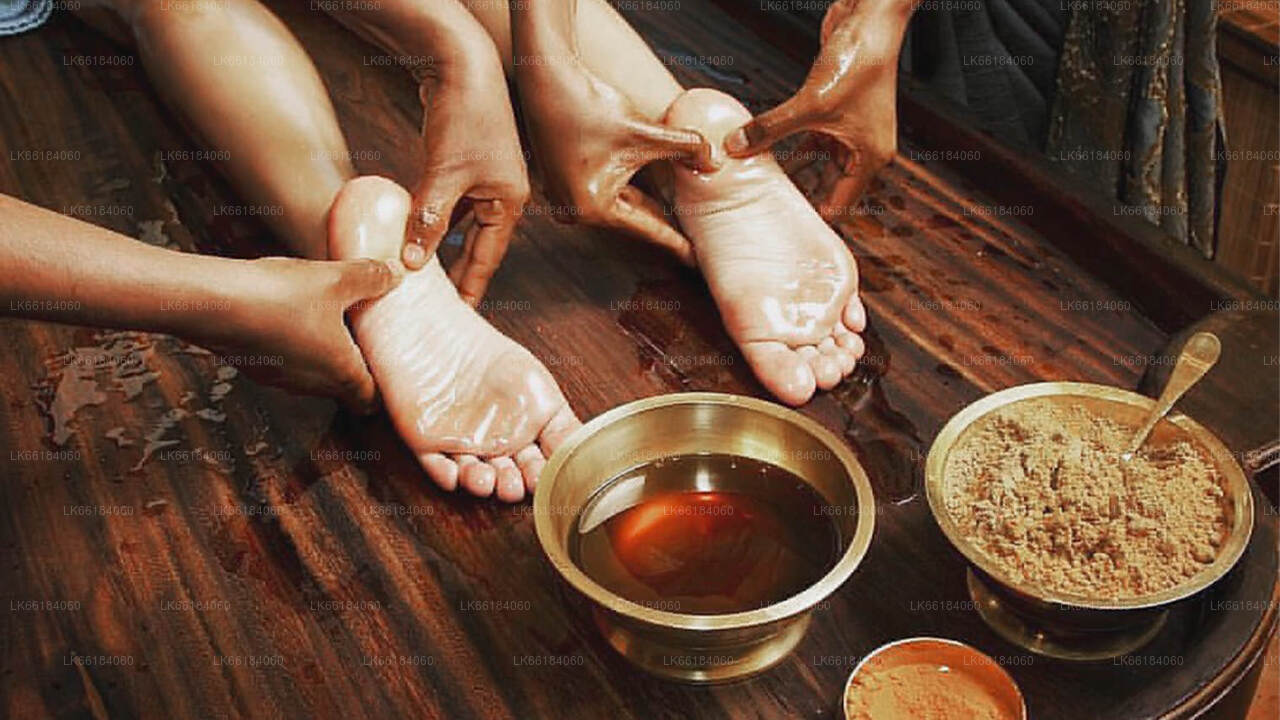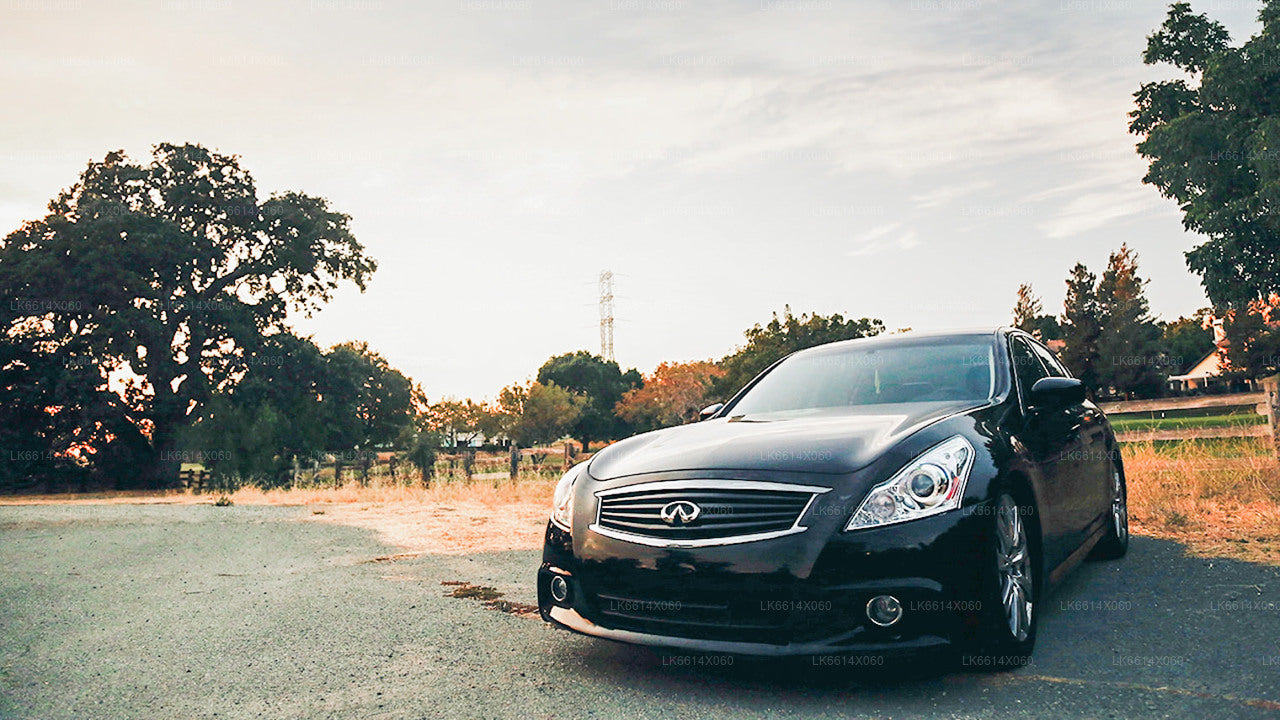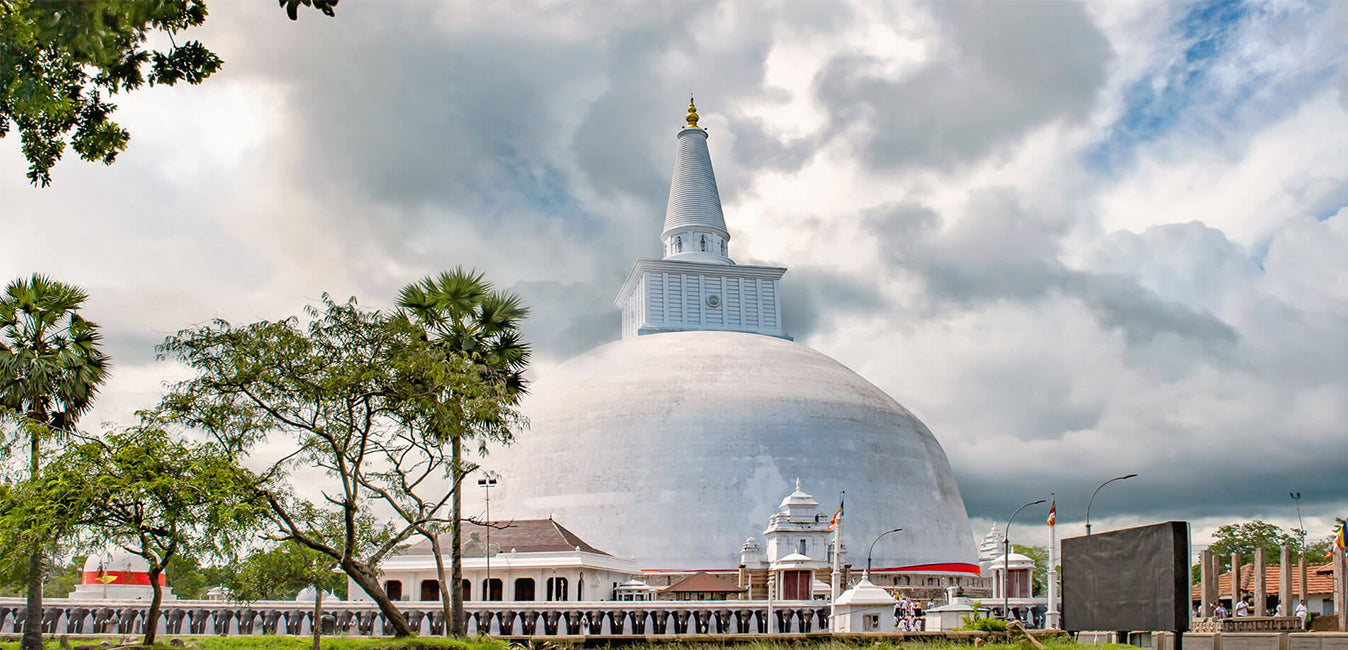
Anuradhapura by
Anuradhapura tilhører den nordlige sentrale provinsen på Sri Lanka. Anuradhapura er en av de gamle hovedstedene på Sri Lanka, kjent for sine godt bevarte ruiner av den gamle lankiske sivilisasjonen. Byen, som nå er et UNESCOs verdensarvsted, ligger 205 km nord for den nåværende hovedstaden Colombo på Sri Lanka.
Aukana Buddha Statue
Aukana Buddha statue is located 30km northwest of Dambulla close to the ancient Kala Weva man-made rainwater reservoir. It can be reached from Kekirawa on Dambulla-Anuradhapura road.
The tallest ancient Buddha statue of Sri Lanka
Aukana Buddha Statue in Sri Lanka that rise to a height of 11.36 meters, is the tallest ancient Buddha statue in Sri Lanka.
The posture of the statue
Aukana Buddha Statue in Asisa Mudra or the “posture of blessing” is carved out of a rock boulder. The statue is carved in the round connected to the back to the rock boulder. The delicate and skillful carving of the Buddha’s robe humanizes and chastely reveals the underlying form of his body, while the face’s impassive expression projects an aura of spiritual supremacy.
It is said that the degree of alignment of the statue is such that raindrop on the nose would drop straight down to a small depression carved between the toes. Aukana Buddha Statue is a masterpiece of a colossal Buddha Statue by an unknown sculptor: the serene expression of the statue, the gracefully carved robe with neat pleats brings in delicateness that could hardly be molded into a rock. The impassive expression of the face reflects the supreme spirituality.
The sculpture in proportion
Aukana Buddha Statue is carved alone in the proportion of nine faces: the body height is nine times the length of the face. The proportion of nine faces is the iconometry followed by the sculptors in the eighth century AC of Sri Lanka.
Sirasapata
Sirasapata is the symbol placed on the top of the Buddha images in Sri Lanka. The sirasapata found on the head of Aukana Buddha statue is believed to be a modern addition in the year 1870. The discovery of a fragment of a sirasapata in the premises of the site suggests there had been a sirasapata on the head of the statue nearly a century before 1870. This turn of events has lead to the study of whether sirasapata had existed from the very beginning in the 8th century AD. According to Buddhist literature, sirasapata have existed in all four previous Buddhas. The introduction and existence of sirasapata have been consistent in Sri Lanka since the second half of the fifth century A.D. with several exceptions. Hence it is believed Aukana Buddha Statue too was adorned with a sirasapata.
Drapery
Drapery, the art of draping the statues in folds is prominent in the Aukana Buddha statue. The robe in single groves is draped over the left shoulder to fall over the left shoulder up to the ankle. The right shoulder is left bare.
Pedestal
Aukana Buddha statue stands on a pedestal, the front of which is carved off a slab of stone in the form of a double petal lotus flower called Padmasana meaning the Lotus seat.
School of Art
Iconography, the study of characteristics of statues, the Avukana Buddha, particularly the sirasapata, pedestal, and the style shows Aukana Buddha statue belongs to Anuradhapura school of art.
Dating Aukana Statue
The difference in opinion of the experts of the dating of Aukana Buddha statues was finally resolved following the discovery in the year 1952, of an inscription on a granite slab built onto the northern wall of the shrine. The statue was sculpted in the second half of the 8th century AD when Mahayana Buddhism threatened to take root in Sri Lanka.
Om Nord-Sentralprovinsen
Anuradhapura tilhører den nordlige sentrale provinsen på Sri Lanka. Anuradhapura er en av de gamle hovedstedene på Sri Lanka, kjent for sine godt bevarte ruiner av den gamle lankesiske sivilisasjonen. Byen, som nå er på UNESCOs verdensarvliste, ligger 205 km nord for den nåværende hovedstaden Colombo på Sri Lanka. I den hellige byen Anuradhapura og i nærheten finnes et stort antall ruiner. Ruinene består av tre typer bygninger: dagobas, klosterbygninger og pokuna (dammer). Byen hadde noen av de mest komplekse vanningsanleggene i den antikke verden, og ligger i den tørre sonen av landet. Administrasjonen bygde mange tanker for å vanne landet. De fleste sivile er singalesere, mens tamiler og srilankiske maurere bor i distriktet.
Om Nord-Sentralprovinsen
Nord-Sentral-provinsen, som er den største provinsen i landet, dekker 16 % av landets totale landareal. Nord-Sentral-provinsen består av to distrikter kalt Polonnaruwa og Anuradhapure. Anuradhapura er det største distriktet på Sri Lanka. Arealet er 7 128 km². Nord-Sentral-provinsen har en rekke potensialer for investorer som vil starte sine virksomheter, spesielt landbruk, landbruksbaserte næringer og husdyrsektoren. Mer enn 65 % av befolkningen i Nord-Sentral-provinsen er avhengige av grunnleggende landbruk og landbruksbaserte næringer. NCP kalles også «Wew Bendi Rajje» fordi det finnes mer enn 3000 mellomstore og store dammer i provinsen. Sri maha bodiya, Ruwanweli seya, Thuparama dageba, Abayagiri-klosteret, Polonnaruwa Rankot wehera og Lankathilake er redde.

